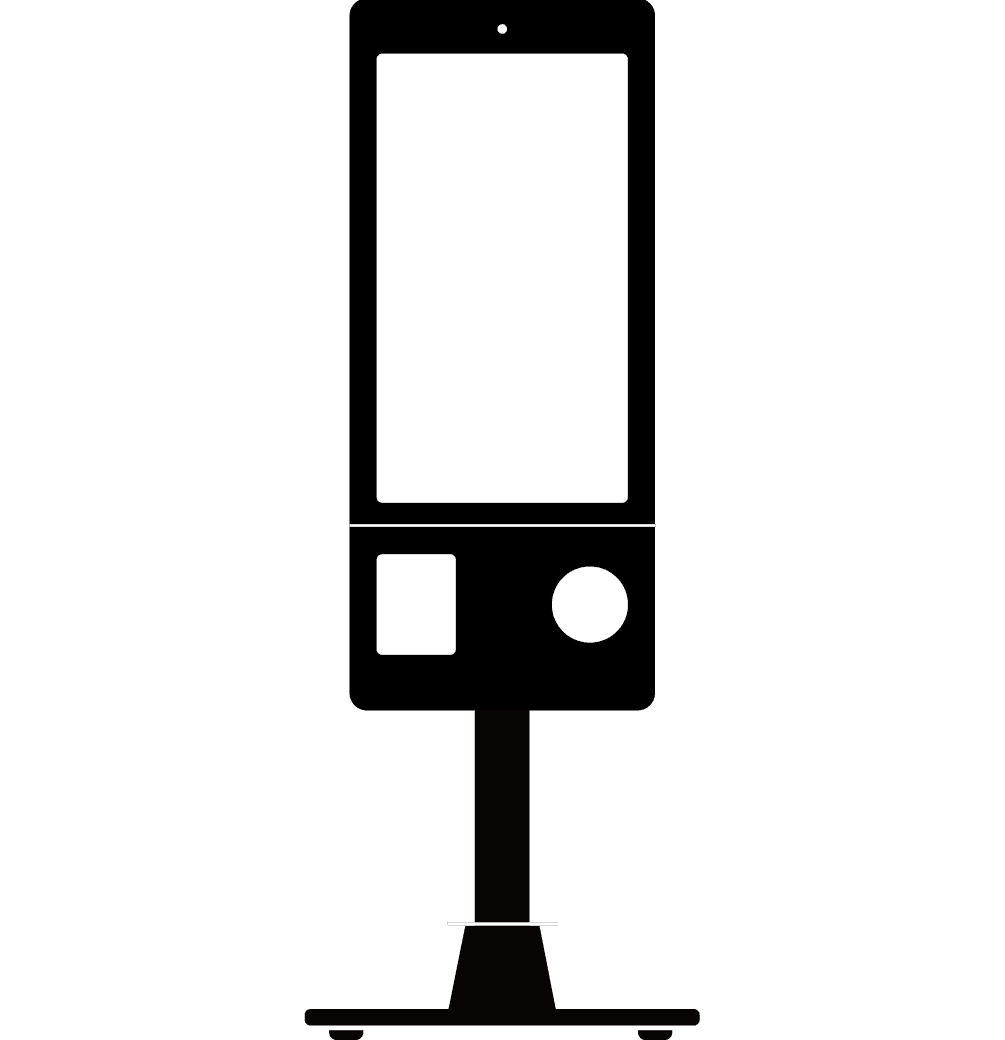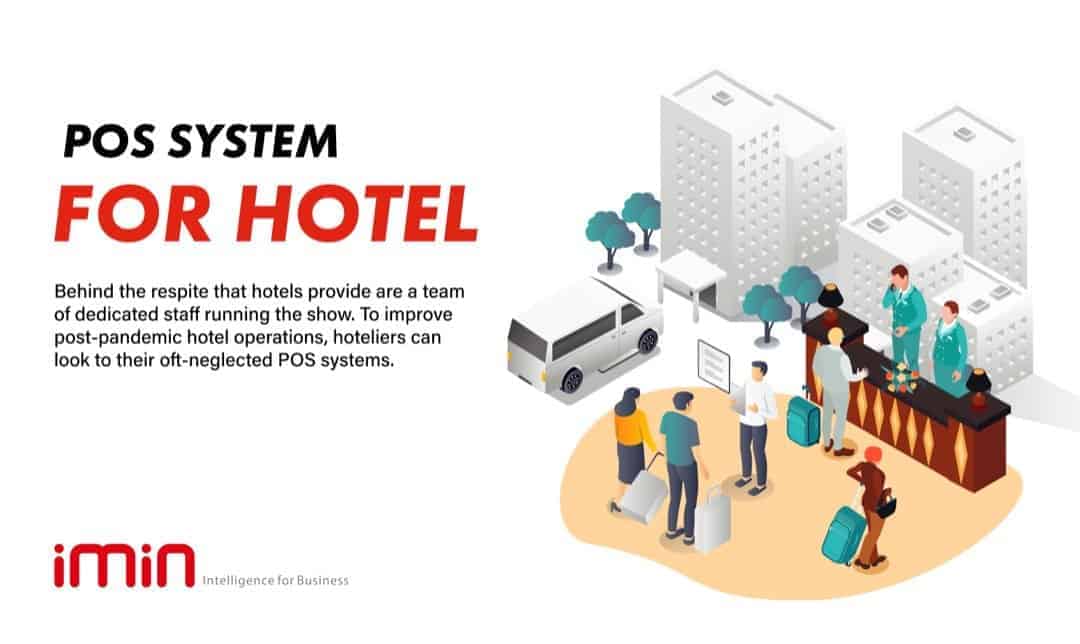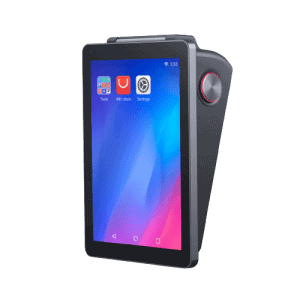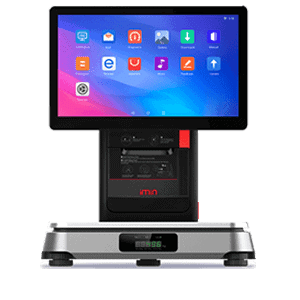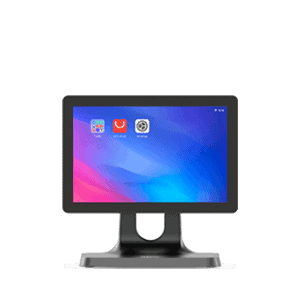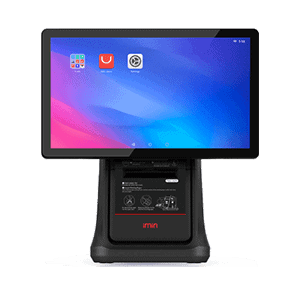A new and better normal
Hotels simultaneously hold promise of adventure and respite, and now feel like a post-pandemic dream.
As travel lanes finally start to kick off in various countries, it is an opportune time to envision how hotels can bounce back readier than ever. This article will share three strategies to get hotels back on their feet.
Technology in the hotel industry
Most hotels use a Property Management System (PMS). In fact, many hotels place great importance on PMS – Skift’s Hotel PMS Systems Landscape 2020 report found that “PMS received the single highest budget allocation among surveyed hoteliers in 2019, with 26% of hotel IT software budgets going to the PMS.” [1] However, PMS on its own is insufficient to manage all hotel operations. Hence, most hotels supplement PMS with Point of Sale (POS) devices. These two systems work together by taking charge of different aspects of hotel management – PMS systems organise the hotel booking engine, while POS system handle sales transactions. Both systems are integrated through secure data sharing channels.[2] This article will focus on the POS side of the equation, because there is much scope to maximise the utility of a POS system for hotel.
Create a seamless guest experience
Hotels beyond a certain scale run a battalion of devices at once. From check in counters at the front desk, to payment devices at every restaurant and shop, to facility management devices at hotel amenities, hoteliers have their hands full of machines.
From the hotelier’s perspective, each device may have its own purpose, and the devices may work perfectly fine locally.
However, from the guest’s perspective, devices which are not connected bring down the service experience drastically. It turns a straightforward experience into one that is inconsistent and unnecessarily complicated.
The ideal guest experience should look like this:
A guest should be able to book any facility in the hotel using a mobile app, all charges racked up during their stay should be consolidated in a single final bill, and any special promotions should be easily applied across facilities. For example, restaurant discounts that come with their room package should be automatically applied at the restaurant.
To make this experience a reality, hoteliers should choose or upgrade their POS devices with the aim of creating a seamless, end to end experience.
This can be done by choosing a cloud-based POS system.
An example of a cloud-based POS system
The main difference between a cloud-based POS device and a non cloud-based POS device is whether the data is stored remotely on a server or locally in the device.
Cloud-based POS devices have the advantage of real-time sync across unlimited devices, depending on the software pricing plan. Even if the hotel uses a whole suite of different devices such as mobile POS, desktop POS, self-service kiosk, all devices can be synchronized instantaneously.
These features of POS devices also make it well-positioned to connect deeply with PMS systems, creating a truly integrated and connected system.
POS devices which are cloud-based also have the added benefit of connecting employees. With cloud-based devices, employees will have access to the exact same information, making it easier for all employees to be on the same page. This will simplify communication across roles, increasing employee productivity.
Thus, a connected system backed by technology will become table stakes in the resumption of hospitality services.
Data driven solutions
Modern commerce runs on data, and the hospitality industry is no exception. Hotel managers have long established various key performance indicators, including but not limited to net operating income (NOI), gross operating profit per available room (GOPPAR), and total revenue per available room (TRevPAR).[3] While all these indicators are vital to measuring the financial health of a hotel, hoteliers may wish to consider meaningful, but non-financial, metrics in their workflow, inventory, and employee management.
The post-pandemic hospitality industry faces a unique conundrum – guests now expect personalization without the people. The only way to achieve this is to adopt an efficient data driven approach by collecting the right data.
Industry recommendations by the Singapore Tourism Board, a world leader in the hospitality industry, can shed some light on meaningful indicators to tap on. The Tourism Board recommends hotels to “leverage data analytics to develop a culture of measurement, streamline processes, forecast demand and eliminate redundancies in job functions including Housekeeping, Front Office, F&B, etc. [For example,] Marina Bay Sands Hotel employs demand forecasting and data triangulation to improve guest check-ins, luggage delivery and housekeeping. As a result, the Hotel is able to better allocate manpower resources and raise its service experience with the achievement of 15% improvement in manpower productivity.” [5]
 Marina Bay Sands’ infinity pool, photo by Will Truettner on Unsplash
Marina Bay Sands’ infinity pool, photo by Will Truettner on Unsplash
Thus, hoteliers can take the following steps to collect and deploy data.
#1 Aggregate customer feedback through direct surveys and online reviews.
The most useful and granular feedback a hotel can obtain is through end of stay surveys. POS systems deployed across the hotel can also be used to systematically obtain data on customer satisfaction.
#2 Do A/B testing on meaningful indicators.
A/B testing is the practice of showing two different sets of randomly selected users different versions of a website or interface. [6] By measuring the two sets of user behaviour, the test can isolate the variable that produces better outcomes.
During A/B testing, be strategic about the data your company values. For example, a boutique hotel may wish to curate popular experiences while hotel chains may aim to analyse which room type gets the most bookings.
#3 Combine cross channel data analytics to create customer profiles and spot trends.
There are many great tools to help hoteliers garner meaningful insights from data. For example, hoteliers can create customer profiles to better serve their existing audience, or do statistical analysis to predict future trends in the industry.
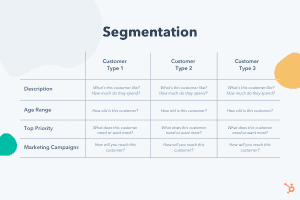 An example of a customer segmentation checklist, from Hubspot [4]
An example of a customer segmentation checklist, from Hubspot [4]
#4 Multi-purpose use data usage.
With such a rich trove of actionable insights, hotels can use the data in many ways. One way is demand forecasting and predictive scheduling to improve daily operations such as inventory and employee management. It can also be extrapolated to determine the ideal price for different packages and the wide range of ancillary services provided by the hotel.
Self-service in a contactless economy
The pandemic has solidified the position of contactless services. The hotel business, where personal touch by experience staff has long reigned, has also given way to automated and contactless services.
Hotels can hop on this trend by utilizing self-service kiosks.
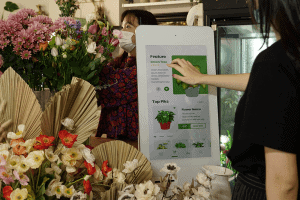 An example of a self-service kiosk
An example of a self-service kiosk
In Singapore, “Village Hotel Katong by Far East Hospitality … re-designed its service touch-points by implementing a self-service laundry drop-off and a self-service check-in kiosk at its front office. By encouraging a more DIY-focused culture amongst guests and with the streamlining and integration of processes between departments, the hotel is able to enhance guest experience.” [5]Some other concrete examples include:
Check-in and check-out services. Queues have never been a welcome sight for guests. Instead of only relying on check-in counters manned by employees, hotels can install self-ordering kiosks as an alternative. If hoteliers are not ready to fully automate the process, self-service kiosks can also be used for queue management services. This way, guests can grab a queue ticket and wander around the premises instead of waiting in line.
Facilities booking and management. In the past, hotels either let guests access facilities freely or stationed employees at each facility to manage crowds and reservations. With pandemic induced restrictions on venue capacities and safe distancing, self-service kiosks have become a useful alternative for facility management.
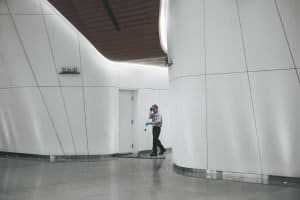 An employee cleaning premises, photo by Verne Ho on Unsplash
An employee cleaning premises, photo by Verne Ho on Unsplash
In addition to saving time and resources, self-service kiosks can also be directly integrated with the hotel’s website and applications to manage reservations seamlessly. Thus, a guest may be able to access the hotel’s website to determine the current capacity of different facilities, book slots, and access the facility.
When used well, self-service kiosks can be a pleasant touchpoint in the customer experience.
Conclusion
Guest satisfaction is of paramount importance to a hotel owner. Hotels which run a wide range of services should work towards full integration amongst POS devices, then between POS and PMS systems for the best effects.
Hotel POS systems are perfectly suited to this job, and will bring great benefits to hotel business owners and guests alike.
Interested to know more about POS Solutions? Clink here to explore more.
References
[1] https://hoteltechnologynews.com/2020/03/the-evolution-past-present-and-future-of-hotel-property-management-systems/
[2] https://prenohq.com/blog/whats-the-difference-between-a-pms-and-a-pos/
[3] https://www.hospitalitynet.org/opinion/4102263.html
[4] https://blog.hubspot.com/service/customer-profiling
[5] https://www.mti.gov.sg/-/media/MTI/ITM/Lifestyle/Hotels/Hotels—STB-FactSheet.pdf
[6] https://hbr.org/2017/06/a-refresher-on-ab-testing





